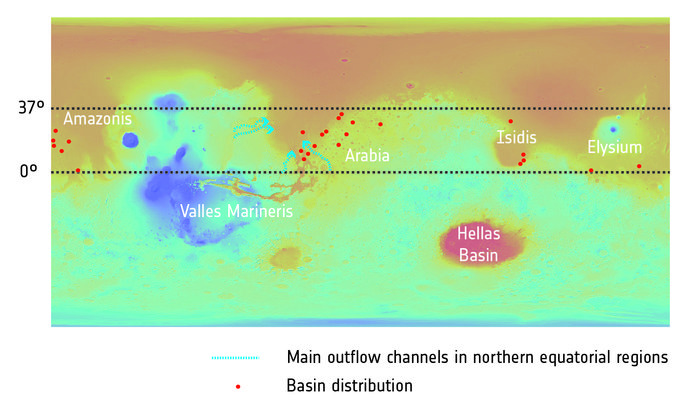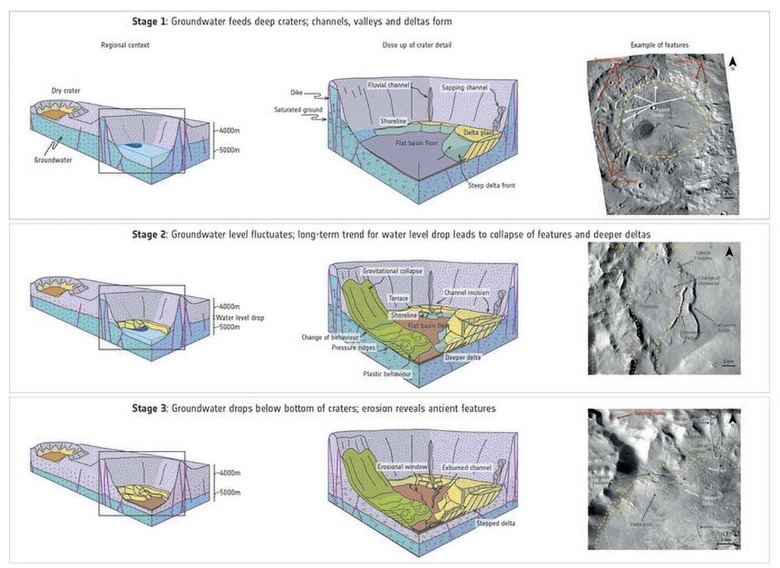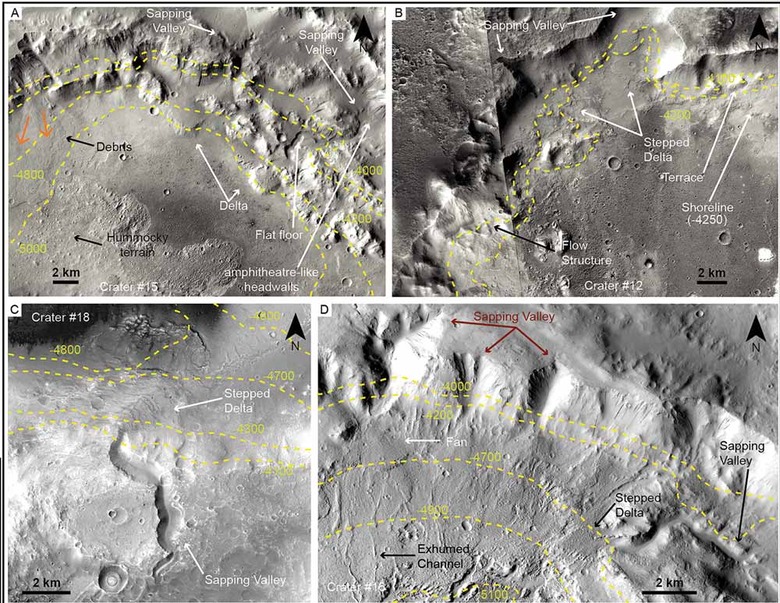Mars Had A Vast Underground Water System New Research Claims
Last year Mars Express detected water under Mars' south pole – now it's become more clear to which extent that water represented Mars' watery past. According to new findings with the ESA and Mars Express here in the present, early Mars had water – lots and lots of water, on the surface, in liquid form. Researchers found evidence of massive amounts of water by studying 24 individual deep, enclosed craters in the planet's northern hemisphere. They found features that couldn't have formed in any way other than in the presence of liquid water.
We went back in time to February 6th, 2012 to bring you this once-again-relevant image from the ESA and C. Carreau. This image is titled "ancient northern ocean on Mars" and it comes from the first study published with the Mars Express on Mars' ocean back 7 years ago.
The MARSIS radar on Mars Express detected sediments "reminiscent of an ocean floor." This evidence matches up well with what's been found here in 2019 – as such, the image of Mars (and its putative northern ocean) is given more credence than ever before.

Craters studied show signs of matching levels of water. Quite a few of the craters contain telltale signs of water at depths of 4000 to 4500m below what's considered Mars' own 'sea level.'
Sea level, in this case, has little to do with any body of water. We use the term sea level on Earth because of actual bodies of water, but on Mars it's just a familiar term to use for a common elevation. This level was established long ago by scientists who based said elevation on a common elevation and atmospheric pressure.
Evidence of water levels seems to confirm – or get closer to the truth of – a real-deal and actual historical martian ocean. The crater-based lakes, of which this new study found evidence, were quite possibly rather full at the same time as this martian ocean. Evidence pointed toward water levels aligning with those of the putative martian ocean mentioned above.

The image above is copyright NASA/JPL-Caltech/MSSS; Diagram adapted from F. Salese et al. (2019). The image below is also copyright NASA/JPL-Caltech/MSSS.

These water basins would have been around 3.5 billion years ago.
Evidential features found:
• Ridged terraces within crater walls formed by standing water
• Channels cut into crater walls
• Fan-shaped deposits of sediment indicative of flowing water
• Valleys likely made by sapping groundwater
• Deltas likely formed at the rising and falling of water levels
According to this study's co-author Gian Gabriele Ori, director of the Università D'Annunzio's International Research School of Planetary Sciences, Italy, these lakes are indicative of something deeper.
"We think that this ocean may have connected to a system of underground lakes that spread across the entire planet," said Ori. Evidence in this study compliments findings published earlier with an eye on underground lakes and the idea of an interconnected underground lake system.
According to the ESA, this study used observations from several awesome high-powered pieces of equipment. These machines included the High Resolution Stereo Camera (HRSC) on ESA's Mars Express, NASA's High Resolution Imaging Science Experiment (HiRISE), and from the Context Camera aboard NASA's Mars Reconnaissance Orbiter.
This study also made use of a digital terrain model that was based on data from NASA's Mars Orbiter Laser Altimeter and the HRSC.
You can learn more about this specific subject via the study "Geological evidence of planet-wide groundwater system on Mars" authored by Salese, F., Pondrelli, M., Neeseman, A., Schmidt, G., and Ori, G. G. and published in the Journal of Geophysical Research – Planets. You can find this paper with code DOI:10.1029/2018JE005802 at your leisure.
